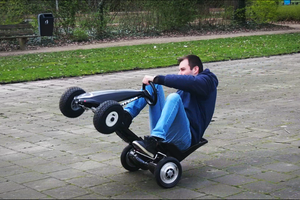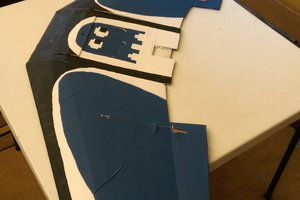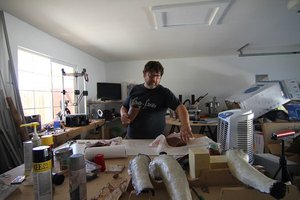The GearCopter project represents a pioneering endeavor in the realm of unmanned aerial vehicles, introducing a radical departure from traditional quadcopters. At its core is a groundbreaking gear-driven propulsion system that revolutionizes flight capabilities.
Key Features:
- Gear-Driven Propulsion: Unlike conventional quadcopters, the GearCopter employs an inventive gear-based propulsion system. Propellers are strategically positioned on gears within the aircraft's frame. These gears serve as the primary mechanism for generating lift, thrust, and power, propelling the GearCopter into new realms of performance and efficiency.
- Precise Flight Control: The GearCopter is equipped with a precision flight control system that enables unparalleled agility and stability. Advanced algorithms for pitch, yaw, and roll control ensure that the GearCopter responds seamlessly to pilot commands, making it suitable for a wide range of missions.
- Customized Routes: A hallmark of the GearCopter is its programmability, allowing it to follow designated flight paths with precision. This capability is invaluable for applications such as aerial surveys, surveillance, and autonomous cargo transportation, where specific routes are essential.
- Weight Optimization: Every component of the GearCopter has been meticulously designed with weight optimization in mind. This careful balance ensures optimal flight performance, payload capacity, and energy efficiency, all while adhering to safety standards.
- Safety and Reliability: Safety features are integrated into the GearCopter's design, including fail-safes, real-time diagnostics, and battery monitoring. These measures enhance the overall reliability and safety of the aircraft.
- Versatile Applications: The GearCopter's versatility is a game-changer across multiple industries. From drone delivery services to extended endurance missions, its capabilities transcend traditional limitations, offering extended flight times and increased operational efficiency.
In this configuration, the GearCopter operates without magnets for power generation and does not recharge its batteries during flight. However, it still represents a paradigm shift in unmanned aerial vehicle technology, with its innovative propulsion system and advanced flight control capabilities opening doors to a wide range of applications.
With its extended flight endurance, precise maneuverability, and adaptability, the GearCopter project is poised to reshape the future of aerial operations, setting new standards for efficiency and performance in the field.
 Future1xtech
Future1xtech
 kopylov.ddut
kopylov.ddut
 EmanuelFeru
EmanuelFeru
 John Boyd
John Boyd
 spacefelix
spacefelix